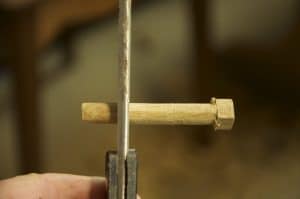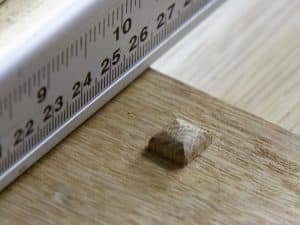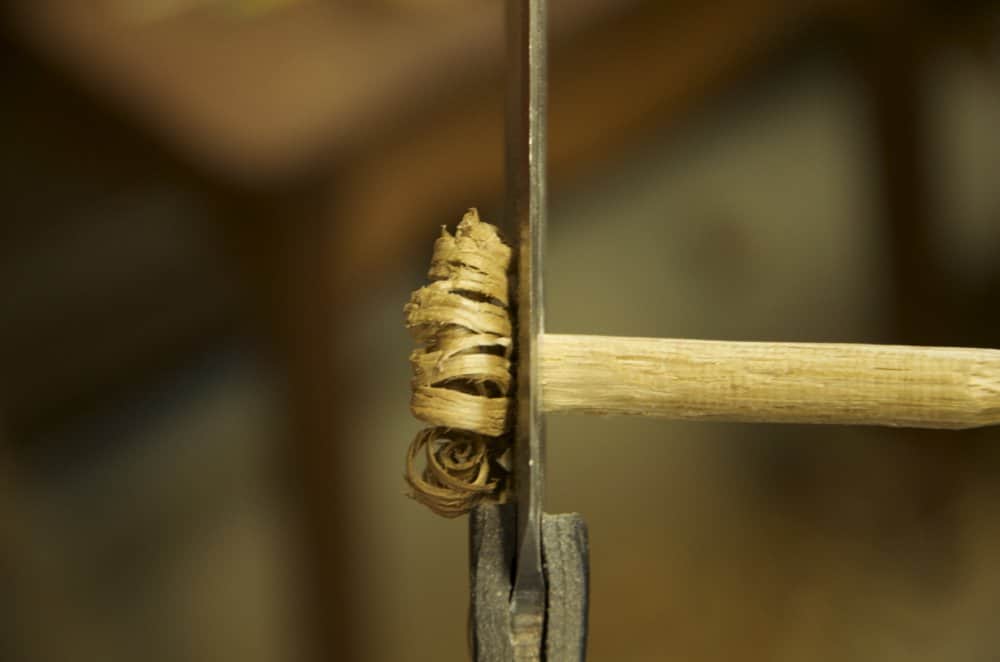Draw-bore pins with a difference—How to make and use them




It’s one thing making the dowels but making the square ends and fitting them to the recess might be a challenge without the right instruction. No routers and no lathes, no fancy equipment for any of it, just stuff you probably have hanging around. Hope that you enjoy it.
Oh, and no we won’t bang on about selling you anything either. No spamming, no adverts just real woodworking free for all who want to master real woodworking.


Thanks again Paul, and all the team.
Cheers!
Timely lesson, and my first month’s subscription has been paid off several times over by what I learned, and I’ll tell you why: a third way to make drawing pins I learned last week.
Chris Schwarz at Lie-Nielson demonstrated drawpins in tenon-mortise joints. Smaller joints, so he used a 1/4 inch hole and peg. He bore the holes the same as you, but during the assembled first dry run, he used one of a Drawbore Pin Pair (sold as a pair by L-N for $90) to twist into the joint first to ease the way. He did taper the dowel pin all the way around, while you did it simply to get the leading end past the the offset of the tenon.
For a dowel pin, he batoned a slice of short oak with his folding pocket knife. (Ouch! I just don’t see someone who treats his tools well dong that to a knife, no matter what the current fashion is.) He then used a Dowel Plate (sold each by L-N for $90; the case for only $15) to reduce the square batoned slice of oak first to 1/2″, then 3/8″ and finally to 1/4″.
Chris reassembled the joint and drove in the dowel, 1/16″ offset, driving the sharp end past the far face of the joint. And then he cut off the excess cleanly with a flush saw.
Like you, I enjoy the chase for a better price, and came up with only one other high-end dealer who has the gear: Lee Valley. A single Drawbore Pin for $30, and a set of 4 Dowels Sizers for $40. So I got the price down from $135 to $70. L-N’s philosophy is to do a pair of mortise-tenon joints at a time, unless the work requires the use of four at a time. By the way, Chris did not use glue, and the dry run demonstrated that it was a fairly loose joint to start with (I guess to make the point). It sure was tight when he finished it.
So, my question is what wood did you use for the doweling? Stronger than oak?
I like this joint. The proof is in my doctor’s waiting room,with Craftsman style seating of different types, the common theme though, being loose mortise-tenon joints. Not really any worn wood finish or seating cushions, and whopping 1-inch-across square peg heads at some joints, probably hiding screws. I like this draw boring joint. A lot.
*****************************************************************************
PS:
If I’m right, you used 3/8″ for pretty much everything in that joint, including the hole I think you drilled through the hacking knife. Which of course would be more appropriate for batoning, especially bought from Ragnar from RagweedForge for $17.50, although I use the Mora high carbon chisel knife (no point, just edge) for $12.50). Won’t catch me using my folding belt knife for bashing with a hammer, no less.
(Disclaimer: I get no commissions or price breaks from Ragnar, who sometimes dresses like a Viking, axe, puukko, and all.)
Actually, washers work very well for dowel makers too. In our video we just used oak, but any and all woods work.
I can see a 6″ to 8″ board in my future, with a set of washers with graduated size holes lined up and inset into the wood. Already have the bits to make holes in the wood for the new dowels to drop through.
I even see a light filing to sharpen the inside edges of the washer hole. Oak dowels ! I’m coming up in the world.
By gosh, between Paul and Derek, I do believe dinner our with my wife just fit into the budget. Thank you, guys.
The videos are great, even if you have watched everything on YouTube sign up for the free videos here. This is so easy, custom dowels in any wood one needs from scrap.
Jeff, I like LN tools as much as the next guy, but an appropriately sized screwdriver works a charm as a drawbore pin for a tenth of the price.
Thank you for the suggestion. When I get to a suitable Mortise-Tenon joint, first I’ll try going pinless, as Paul did (makes me think of skinny dipping as a kid). I I definitely have some Phillips screwdrivers with ruined Phillips heads to put to the hand-cranked grinder for a minute or two. Gotta love what we used to call “work-arounds” in my late, unlamented career in computer stuff.